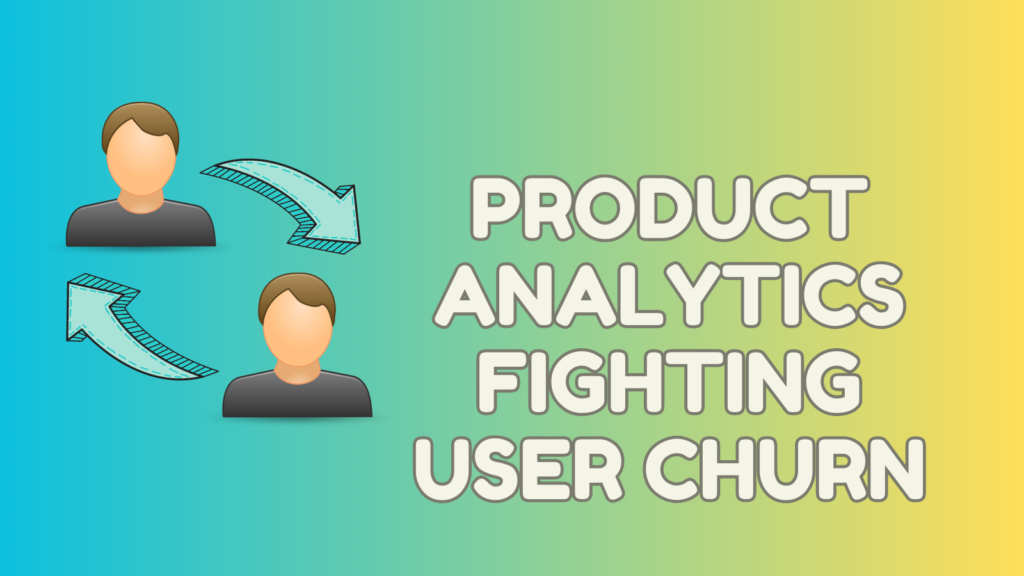User retention plays a pivotal role in sustainable growth. It’s not just about acquiring users; it’s about keeping them engaged and satisfied over the long haul. However, the challenge lies in understanding why users leave, a phenomenon known as “churn.” This article delves into the intricacies of user churn and unveils how the strategic use of product analytics can be a game-changer in reducing churn rates and fostering lasting customer relationships.
Understanding User Churn
User churn, often referred to as customer attrition, occurs when customers or users discontinue their engagement with a product or service. It’s a metric that every business closely monitors, as high churn rates can undermine efforts to expand and thrive. Churn can stem from various factors, such as dissatisfaction, competition, changing needs, or simply a lack of value realization. Identifying the root causes behind churn is the first step toward mitigating its impact.
In the intricate dance between businesses and their user base, understanding user behavior isn’t just advantageous—it’s essential. This is where product analytics emerges as a powerful ally, armed with the ability to illuminate the darkest corners of user interactions, preferences, and trends. Delving deeper into this realm, we find that product analytics isn’t just a collection of data; it’s key to deciphering the code of user churn and forging strategies that counter it.
User churn, like a puzzle, requires assembling the pieces to comprehend the bigger picture. Product analytics lays out these pieces methodically. It tracks how users navigate through your digital ecosystem, highlighting the touchpoints they engage with, features they utilize, and content they consume. This data-rich map illustrates the well-trodden paths and the unexplored avenues users avoid. By scrutinizing these trails, businesses gain invaluable insights into what drives user engagement and what triggers disinterest.
Product analytics acts as a detective, uncovering the subtle patterns that often lead to user churn. It identifies trends in user behavior that may indicate an impending departure. Are users consistently dropping off after encountering a specific feature? Is there a correlation between decreased activity and the introduction of a new update? These seemingly cryptic patterns become comprehensible when product analytics decrypts the data, allowing businesses to address potential issues before they snowball into churn.
In the realm of user churn, the adage “forewarned is forearmed” holds true. Product analytics provides businesses with a crystal ball of sorts—a glimpse into the future of user engagement. Armed with historical and real-time data, companies can anticipate the needs and preferences of their users, tailoring experiences that resonate with their expectations. This proactive stance means that strategies to reduce churn aren’t merely reactive solutions, but thoughtful, premeditated actions designed to prevent churn from occurring in the first place.
Gone are the days of relying solely on gut instinct or conjecture. Product analytics puts the power of informed decision-making into the hands of business leaders. With data-backed insights, they can confidently make choices impacting user retention. Should a particular feature be enhanced or removed? Are certain touchpoints causing frustration? Once shrouded in uncertainty, these questions now find definitive answers in the meticulous analysis provided by product analytics.
User churn isn’t just a metric; it’s a reflection of user dissatisfaction, unmet needs, or changing preferences. By peering through the lens of product analytics, businesses can understand the intricate motivations driving user behavior. This deeper understanding paves the way for tailored, empathetic strategies that address the core reasons behind churn. As businesses align their efforts with these insights, they create an ecosystem where user retention isn’t just a goal—it’s a natural consequence of delivering value, meeting expectations, and fostering enduring user relationships.
Key Steps to Reduce Churn with Product Analytics
- Data Collection: Set up robust data collection mechanisms to gather user interaction data across various touchpoints. This data forms the foundation for churn analysis.
- Segmentation: Divide your user base into segments based on behavior, demographics, or engagement levels. This allows you to pinpoint specific groups with high churn rates.
- Churn Analysis: Examine user journeys leading up to churn events. Are there common patterns or pain points? Identify trends to tailor your retention strategies.
- Identify Red Flags: Utilize product analytics to identify signs of disengagement or decreased activity. This enables you to intervene before users decide to leave.
- Personalization: Leverage analytics insights to personalize user experiences. Tailor content, features, and offers to meet individual needs and preferences.
- Experimentation: A/B testing can help identify what works best in retaining users. Use analytics to measure the success of different strategies.
- Feedback Loop: Combine quantitative data from analytics with qualitative feedback from users. This provides a holistic understanding of their frustrations and expectations.
Benefits of Leveraging Product Analytics
- Proactive Strategy: Rather than reacting to churn, businesses can anticipate and address issues before users decide to leave.
- Efficiency: Data-driven insights prioritize efforts, ensuring resources are directed towards strategies that have the highest impact.
- Continuous Improvement: Product analytics enables iterative optimization, leading to refined strategies over time.
- Enhanced User Experience: Understanding user behavior fosters tailored experiences, increasing user satisfaction and loyalty.
Conclusion
User churn is a critical challenge in the world of digital business. However, armed with the capabilities of product analytics, businesses can decode the complexities of churn, identify areas for improvement, and execute targeted strategies that enhance user retention. By nurturing a deeper understanding of user behavior and needs, companies can minimize attrition and foster enduring customer relationships that drive growth and success.


